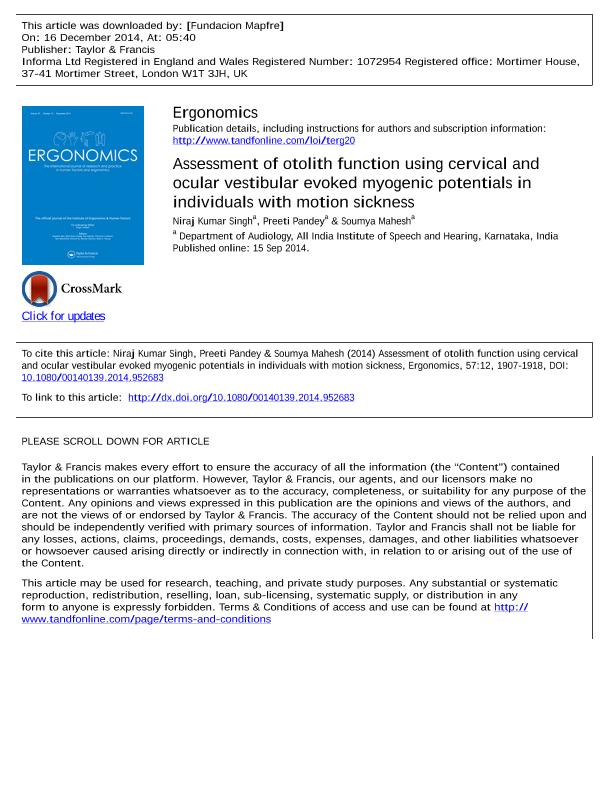Assessment of otolith function using cervical and ocular vestibular evoked myogenic potentials in individuals with motion sickness

Contenido multimedia no disponible por derechos de autor o por acceso restringido. Contacte con la institución para más información.

